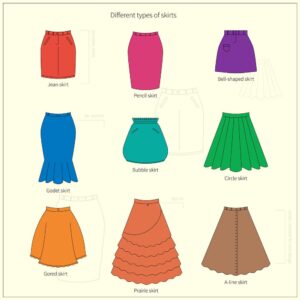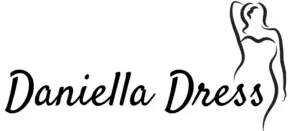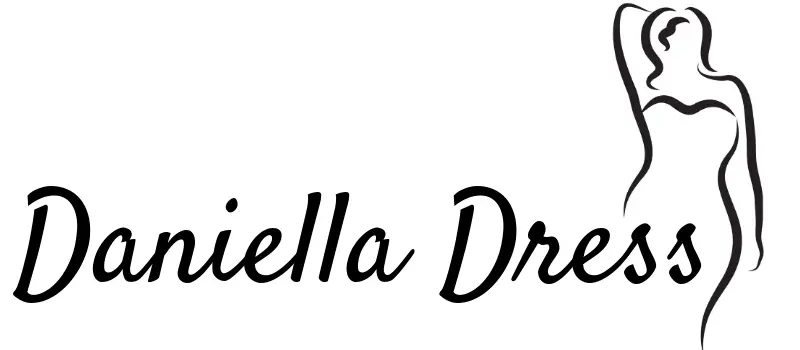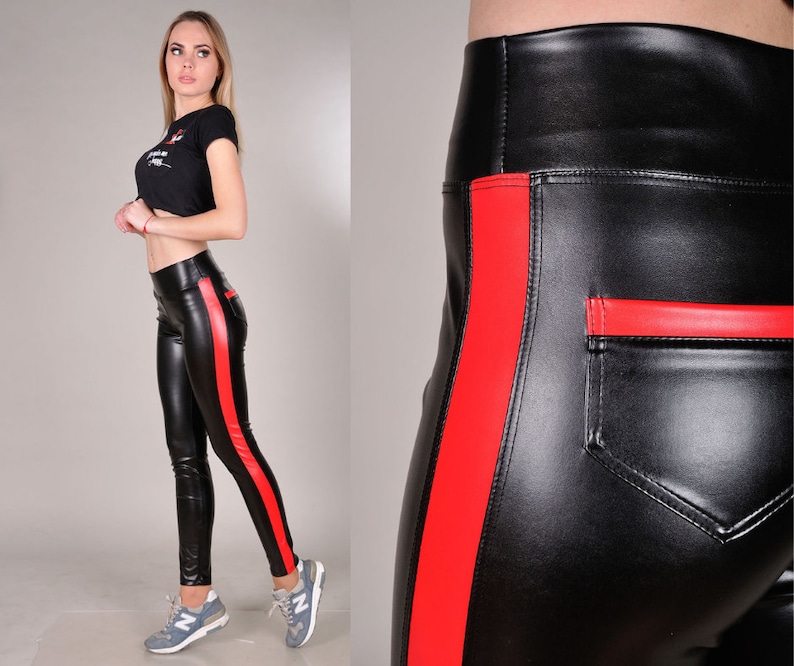Skirts
Skirts: Trends and Styles for Every Season
Skirts have long been a defining piece in women's fashion, offering versatility and style that adapts to occasions ranging from casual outings to formal events. The evolution of skirts over time reflects changes in cultural norms, aesthetics, and the feminist movement, as its various lengths and styles provide options for comfort and self-expression. Today, skirts come in an extensive range of designs, including classic A-lines, flowy maxis, structured pencils, and playful minis.

They are crafted from a myriad of materials such as delicate satins, durable denims, supple leathers, and lightweight cottons to cater to different preferences and climates. The functionality of skirts is matched by their aesthetic appeal; whether it's a pleated midi skirt paired with a button-down shirt for a sophisticated look or a high-waisted mini skirt for a more casual ensemble. Retailers like Nordstrom and Macy's cater to a wide selection of styles, showcasing the diversity and adaptability of skirts within the fashion industry.
History and Evolution of Skirts
Throughout history, skirts have symbolized both fashion and societal norms. They have evolved from simple drapes to complex garments that play a significant role in the cultural tapestry of human history.
Ancient Origins
Ancient skirts varied from simple wraparounds like the loincloths of ancient Egypt to elaborately constructed garments in other cultures. They were not gender-specific, as both men and women wore skirt-like clothing made from whichever materials were available, commonly drawing on local resources. For example, the 3900 B.C. Armenian skirts, fashioned from woven straw, depict the practical use of local materials. Skirts in the ancient world were essential for their versatility and ease of wear, setting a foundation for the evolution of the garment’s silhouette over centuries.
Twentieth Century Developments
In the twentieth century, skirts underwent significant transformations that mirrored the dynamic changes in society and the shifting roles of women. The 1920s marked a drastic shift, with the introduction of hemlines that started to rise, giving way to the iconic flapper dresses that became associated with women's newfound liberation and the era's zest for modernity. Durably etched in fashion history, the mini skirt of the 1960s, pioneered by designer Mary Quant, challenged the norms and truncated the typical skirt silhouette dramatically.
The pivotal 1910s introduced diversifying styles such as the hobble skirt, which narrowed around the lower legs, restricting movement and enhancing the S-shaped silhouette that was popular at the time. Through these decades, skirts not only transformed in length but also in fullness and structure, with an array of types such as A-line, pencil, and pleated becoming part of the vernacular of women's fashion. Each style reflected different aspects of the evolving social landscape, from the practical considerations of the wartime era to the expressive freedoms of the post-war decades, as indicated in a comprehensive history on skirts.
Types of Skirts
There are a plethora of skirt styles available, each offering a different silhouette and vibe to fit various occasions and personal styles. Skirts can transform an outfit, whether it's the classic elegance of pencil skirts or the comfortable sway of maxi skirts.
A-Line Skirts
A-Line skirts are fitted at the hips and gradually widen towards the hem, giving the illusion of the shape of the capital letter ‘A'. This style flatters most body types by highlighting the waist and floating away from the hips and thighs.
Maxi Skirts
Maxi skirts are floor-length garments known for their long, flowing silhouette. Ideal for creating a relaxed and comfortable outfit, they are a versatile choice that can transition from casual outings to more formal events with ease.
Denim Skirts
Denim skirts come in various lengths and designs, featuring the sturdy, cotton twill fabric known for its durability in jeans. They offer a casual-chic look and serve as a wardrobe staple that can be styled in countless ways.
Pencil Skirts
A pencil skirt is a slim-fitting skirt with a straight, narrow cut. Generally tailored for a close fit, this silhouette accentuates the figure and is often a preferred choice for professional and formal wear.
Mini Skirts
Mini skirts, known for their short hemline that usually extends to mid-thigh, are a bold fashion statement. They present a youthful and chic appearance and can be styled with boots in any style, as well as high heels.
Pleated Skirts
Pleated skirts feature folds of fabric that add texture and movement to the garment. From sharp, knife pleats to softer, box pleats, this design varies widely but consistently offers a polished look.
By understanding the characteristics of these skirt types, individuals can choose garments that complement their personal style and body type while staying true to the occasion at hand.
Styling Tips for Skirts
Styling skirts involves balancing silhouette, comfort, and context. Knowing how to choose the right skirt and accessories can transform an outfit from ordinary to exceptional.
Casual Wear
For everyday comfort without sacrificing style, a flared or A-line skirt pairs seamlessly with a simple t-shirt or an oversized sweater. Keeping it relaxed, one might opt for sneakers or flat sandals. Accessories should be understated – think minimalistic jewelry and a casual tote. To maintain a flattering shape, some skirts may benefit from being cinched at the waist with a belt.
Workplace Fashion
In a professional setting, pencil skirts or structured A-lines create a polished look. They can be combined with blouse tops and a blazer for a sharp ensemble. Heels are often the footwear of choice, lending an air of formality and poise. When it comes to colors, neutrals like black, navy, and grey are staples, though a pop of color can make a confident statement.
Evening and Special Occasions
Elevated attire for evenings and special events often includes skirts with luxe fabrics such as silk or lace. The skirts tend to feature more vivid colors or intricate patterns. For these occasions, a skirt may be teamed with an elegant blouse or fitted top, and accessories play a key role in accentuating the outfit – sparkling jewelry and a clutch are perfect choices. Heels are again appropriate, potentially with a more dramatic height or style.
How to Select the Perfect Skirt
Selecting the perfect skirt involves understanding one's body type, the suitable fabric choices, and how to work with colors and patterns to enhance personal style.
By Body Type
- Pear Shaped: Opt for A-line skirts that taper out gently from the waist, creating a balanced look.
- Apple Shaped: High-waisted skirts with a flared bottom can add definition and draw attention away from the midsection.
- Petite: Consider shorter skirts to elongate the legs, such as a mini or a smartly tailored above-the-knee pencil skirt.
- Tall: Maxi skirts can work well to play up height, while midi skirts can accentuate the waistline for a proportioned silhouette.
Choosing the Right Fabric
- Summer: Lightweight fabrics like cotton or linen provide breathability.
- Winter: Heavier materials such as wool or leather offer warmth and structure.
- Career-Focused: Structured fabrics like twill or a fine knit maintain a professional look.
- Casual and Comfort: Jersey, chambray, or soft knit skirts offer ease and flexibility.
Selecting Colors and Patterns
- Solid Colors: Universally flattering, solid colors can be coordinated with ease. Darker shades slim while lighter tones can highlight.
- Patterns: Vertical stripes or small, subtle patterns can elongate the silhouette for those seeking to add height.
- Bold Prints: While they make a statement, it's important to balance them with a solid top to avoid overwhelming the look.
By taking into account body shape, fabric choice, and color and pattern selections, one can confidently find a skirt that enhances and complements their figure and personal taste.
Accessorizing Your Skirt
Accessorizing a skirt can dramatically transform its look, elevating it for an occasion or tailoring it to one's personal style. From the careful selection of shoes to the addition of jewelry and belts, each accessory plays an integral role.
Shoes and Footwear
The choice of footwear can define the mood of a skirt-centered outfit. For a classic look, pumps or stilettos can be paired with a pencil skirt for a sleek, professional appearance. Alternatively, one might consider ankle boots or flats with a midi skirt for a balance of comfort and style. When sporting a mini skirt, options like high-heeled sandals or even sneakers could offer a casual yet chic look.
- Heeled Shoes: Best for adding elegance and a formal touch.
- Flat Shoes: Great for comfort and a more casual aesthetic.
Jewelry and Accents
Jewelry serves not only as an embellishment but also as an expression of the wearer's individuality. Nordstrom's guide on accessorizing suggests scaling accessories to compliment one's frame; for instance, statement earrings might overwhelm small features, while long necklaces would flatter a taller stature. Adding brooches or bracelets can also enhance a skirt outfit by introducing contrasting textures or pops of color.
- Earrings: Choose size appropriate to one's facial features.
- Necklaces: Longer pieces can complement height.
Belts and Waist Accessories
Belts do more than function; they act as a bold statement piece or a subtle complement to a skirt. A wide belt can cinch a flowy skirt at the waist, creating a flattering silhouette, while a thin belt could add a delicate touch to a fitted skirt without overpowering it. Cyber-Techwear emphasizes personalization, suggesting the addition of unique belts packed with personality for their cargo skirts to truly make an ensemble one's own.
- Wide Belts: Ideal for defining shape and adding structure.
- Narrow Belts: Suitable for a minimalistic accent.
Integrating these accessories into one's skirt collection is an art, and with the right combinations, the possibilities to elevate a simple skirt into a statement piece are endless.
Care and Maintenance of Skirts
Proper care and maintenance are essential for keeping skirts in pristine condition. From the robustness of denim to the delicacy of other fabrics, each material demands specific attention.
Fabric Care
When maintaining skirts, the material should dictate the method. Denim skirts are resilient and can typically be machine-washed. However, they should be turned inside out to prevent fading and placed on a gentle cycle with similar colors. For drying, it's best to air-dry denim to prevent shrinkage.
Other fabrics may require more delicate handling. For example, to maintain pleated skirts, one must choose a wrinkle-resistant fabric for easier care or adhere to specific ironing techniques to preserve the pleats. Here's a quick reference:
- Denim Skirts:
- Machine wash cold, gentle cycle
- Air-dry to avoid shrinkage
- Pleated Skirts:
- Select wrinkle-resistant fabric
- Iron pleats with care
Storage Solutions
The longevity of a skirt also hinges on its storage. For denim, folding is suitable due to its durability. Skirts can be folded with the front side down, aligning the hem and waistband, and then placed in a drawer or on a shelf. Utilizing drawer dividers helps maintain shape and prevents tangling.
Stacking skirts vertically rather than horizontally maximizes space efficiency and keeps them readily accessible. Special skirts that cannot be folded, like those with heavy embellishments, should be hung on appropriate hangers to maintain their shape and appearance. Here's how to store different types:
- Denim Skirts:
- Fold and stack in drawers with dividers
- Embellished Skirts:
- Hang on padded hangers to preserve shape
Building a Skirt Wardrobe
A well-curated skirt wardrobe can enhance one's personal style, offering versatility for both casual and formal settings. It should start with foundational pieces and then branch into more diverse styles.
Basic Must-Haves
A-line skirts: These are fitted at the waist and flare out towards the hem, giving a flattering “A” shape. They're suitable for both casual and professional settings.
- Pencil skirts: A staple for workwear, pencil skirts offer a classic silhouette that pairs well with a variety of tops.
- Denim skirts: For a more casual look, a denim skirt is versatile and can range from mini to full-length based on personal preference.
- Neutral colors: Include black, white/cream, and grey for maximum mix-and-match potential.
Expanding Your Collection
- Pleated skirts: Adding a midi length pleated skirt in a few colors diversifies your wardrobe.
- Prints: Incorporate printed skirts such as polka dots and stripes to add interest to your outfits.
- Textures: Consider fabric types like silk for dressier options or wool plaid for a vintage touch.
By starting with basic, versatile pieces and gradually adding more unique skirts, an individual can create a dynamic skirt wardrobe tailored to their personal style.
Trends in Skirt Fashion
Exploring the latest trends, this section covers the evolution of skirt styles and how fashionistas can anticipate future design shifts.
Current Trends
Heavy satin skirts have emerged as a favorite within the fashion community, offering a luxurious texture that pairs well with various tops. Lace continues to be an integral part of the skirt collection, providing a delicate touch to both casual and formal designs. The trend champions a diverse palette, but there is a noticeable preference for rich and earthy tones, which can be effortlessly styled for multiple occasions.
Key styles include:
- Suited Midi Column Skirt: A professional look with a modern twist.
- Rectangle-Panel Upcycled Denim Maxi Skirt: Sustainable fashion making a noticeable mark.
For a comprehensive look at what's currently preferred, Who What Wear provides a guide to the Biggest Skirt Trends of 2024.
Predicting Future Styles
Forecasting the trends for the upcoming seasons, it is anticipated that skirts will incorporate more vibrant colors and experimental cuts. Expect to see a continuation of eco-friendly materials, as the fashion world increasingly values sustainability. Texture will likely play a significant role, with unique fabrics and layering techniques becoming focal points for designers.
Upcoming styles might feature:
- Asymmetrical Hemlines: Bold and dynamic, drawing the eye and adding movement.
- Interactive Embellishments: such as removable lace trims that offer versatility.
For inspiration on future styling possibilities, Vogue provides insights on How to Style Skirt Trends.
Frequently Asked Questions
What factors determine the most flattering skirt type for different body shapes?
The most flattering skirt for an individual depends on their body type and personal style. Mini skirts generally accentuate the legs and are a good fit for petite frames, while midi skirts offer versatility and can complement most body shapes. For a detailed guide on choosing skirts based on body type, readers might explore an ultimate guide to the best skirts.
What are the key style tips for wearing skirts over the age of 60?
For those over 60, it's recommended to opt for skirts that offer comfort while reflecting personal style. People in this age group can look for midi or maxi skirts that provide coverage while still looking chic. Stylists suggest paying attention to proportions to enhance their silhouette, as mentioned by experts at Marie Claire.
How can one achieve a classy appearance when wearing a skirt?
Classiness in attire is achieved through a balance of fit, fabric, and style. Choosing skirts made from quality materials, ensuring a proper fit that's neither too tight nor too loose, and pairing them with the right tops and accessories all contribute to a polished appearance.
What are the distinctions between various skirt lengths and styles?
Skirt lengths vary from mini, which sit above the knee, to maxi, which reach the ground. Styles range from A-line, flattering for most body types, to pencil skirts, which are ideal for formal settings. The different types of skirts along with their patterns are comprehensively listed at Stylecraze.
How can skirts be styled for different occasions and seasons?
For seasonal versatility, skirts can be styled with tights or boots in colder weather, or with sandals and lightweight fabrics for summer. Skirt types like the cargo mini-skirt blend style with practicality and can be suited for various occasions with the right accessories. For more styling tips, consider the advice from Breonna Queen on mini-skirts.
What wardrobe essentials should be considered when pairing tops with skirts?
The key to pairing tops with skirts is in creating a complementary silhouette and cohesive look. Consider the skirt's waistline and volume when selecting tops; fitted tops work well with flared skirts, and tucked-in or cropped styles suit high-waisted skirts. For ideas on what to pair with a skirt, one can look at options presented by Merrick's Art.


